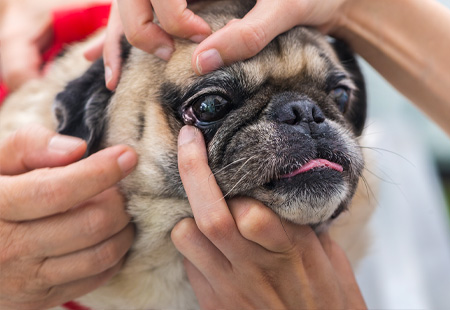Toronto Eye Exams & Diagnostics
Full Veterinary Ophthalmology Diagnostics

Toronto Animal Eye Clinic is a veterinary specialty practice focusing exclusively on eye problems in pets. We only use state-of-the-art diagnostic instruments, and each trained staff members is passionate about caring for your pets and improving their quality of life.
We offer a large range of diagnostic services in order to accurately and quickly diagnose your pet's problem. Once the issue is identified, we can develop a specific treatment plan, working toward a cure for your pet's problem or injury.
Electroretinography
Electroretinography is an eye test used to detect abnormal function in your pet's retina. During the test, Dr. Strong examines the light-sensitive cells of the eye, the rods and cones, and their connecting ganglion cells in the retina.
Ultrasonography
Also known as diagnostic sonography, ultrasonography is a diagnostic imaging technique that allows us to visualize internal structures of your pet's eyes.
Slit-Lamp Biomicroscopy
Slit-lamp examination allows Dr. Strong to see sections of your pet's eye in three-dimensions. This state-of-the-art technique provides views of the cornea, lens, iris and the vitreous gel that fills the space in the middle of the eye. We can view deeper structures of your pet's eye, such as the optic nerve and the retina, by inserting special lenses.

Indirect Ophthalmoscopy
Indirect ophthalmoscopy provides Dr. Strong with a more detailed picture of your pet's fundus—the posterior portion of the eye including the retina and optic disc. This is a non-invasive procedure, using a convex lens located between your pet and the veterinarian's eye.
Tonometry
Low or high levels of intraocular pressure in your pet's eyes can lead to serious problems down the road. Tonometry is a procedure used to examine your pet's intraocular pressure (IOP).
Gonioscopy
For this diagnostic test, Dr. Strong looks into the front part of your pet's eyes to see whether the area where fluid drains out of the eye is open or closed. This is a quick, painless procedure.

